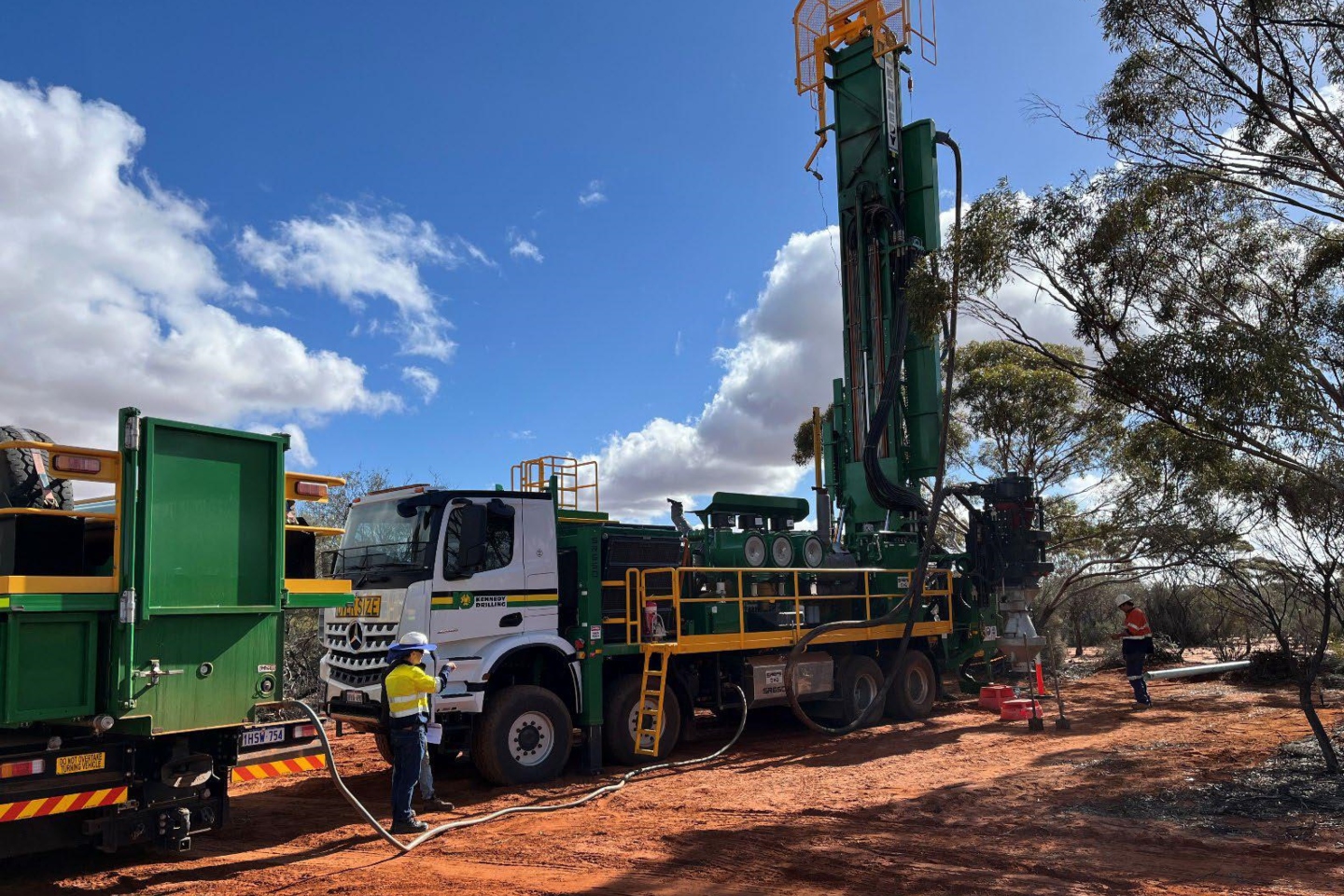Ardea Resources has kicked off definitive feasibility study drilling planned to stretch for 51,745m in 888 holes at the Goongarrie Hub nickel project that it now shares with a giant Japanese consortium in the Western Australian Goldfields town of Kalgoorlie. The aim is to upgrade the project’s massive nickel-cobalt resource to the coveted measured mineral category to boost the confidence in its initial five-year plan.

Ardea Resources has kicked off definitive feasibility study (DFS) drilling planned to stretch for 51,745m in 888 holes at the Goongarrie Hub nickel project that it now shares with a giant Japanese consortium in the Western Australian Goldfields town of Kalgoorlie.
The aim of the joint venture (JV) – which includes Japanese powerhouses Sumitomo Metal Mining and Mitsubishi Corporation – is to upgrade the project’s massive nickel-cobalt resource to the coveted measured mineral category, to back its initial five-year plan for open pit mining at the operation described by the Federal Government as “globally significant”.
Management says increasing the resources contained within the measured category will boost its confidence in the expected payback period – a pivotal number that is due to be revealed in the upcoming DFS that was launched in May. The project is owned by Ardea’s 100 per cent-owned subsidiary Kalgoorlie Nickel (KNPL) and the huge drill program is being supervised by existing KNPL staff, in addition to selected contract geologists.
The company has initiated reverse-circulation (RC) drilling at its Big Four deposit for a planned 16,215m of work. One rig is currently operating and additional rigs are expected to be on-site in September.
It is also planning further drilling for geotechnical and hydrogeological testwork. Diamond drilling will be used to provide bench-scale metallurgical core samples and for validation of historic RC results.
The additional drilling program is awaiting program-of-works (POW) approval from the Department of Energy, Mines, Industry Regulation and Safety (DEMIRS).
Ardea Resources managing director and chief executive officer Andrew Penkethman said: “The Goongarrie Hub Definitive Feasibility Study (DFS) is the first Critical Minerals collaboration between Australia and Japan, with the project expected to be a multi-decade nickel-cobalt operation that provides supply chain diversity, security and meets the high ESG standards expected from Australia and Japan.”
Penkethman said the DFS drilling was designed to outline the measured resources within the open pit shells defined during the company’s 2023 prefeasibility Study (PFS). He added that the updated resource material will be available for conversion to proven ore reserves, assisting with both mine planning and securing project development debt funding.
Ardea revealed in May that the Japanese consortium had committed to backing the development of the project. Details of the deal show that Sumitomo and Mitsubishi have agreed to jointly fund the $98.5 million DFS for the Goongarrie Hub, which is part of Ardea’s wider Kalgoorlie Nickel Project (KNP).
The Japanese pair can claim up to 50 per cent of the Goongarrie Hub operation by funding the DFS and also by helping Ardea secure debt financing for the project as part of the JV agreement.
The KNP consists of an 854 million-tonne resource at 0.71 per cent nickel and 0.045 per cent cobalt for a total of 6.1 million tonnes of contained nickel and 386,000 tonnes of contained cobalt. Goongarrie Hub comprises the bulk of the resource, with 584 million tonnes going 0.69 per cent nickel and 0.043 per cent cobalt.
The three main deposits sit within granted mining leases and ground that is 100 per cent controlled by the company.
Nickel has taken a pricing breather in the past two years, but it is still a “go-to” material for use in electric-vehicle (EV) batteries. The major advantage of using nickel in batteries is that it helps deliver higher energy density and greater storage capacity at a lower cost.
Further advances in nickel-containing battery technology means the commodity is set to play an increasing role in energy storage systems, helping make the cost of each kilowatt per hour (kWh) of battery storage more competitive.
Two of the most commonly-used types of batteries, nickel-cobalt- aluminium (NCA) and nickel-manganese-cobalt (NMC), are made with 80 per cent and 33 per cent nickel, respectively. However newer formulations of NMC-type batteries are also approaching 80 per-cent nickel.
Most lithium-ion batteries also now rely on nickel.
The nickel price has fought back to rise about 5 per cent this year to a current mark of about US$17,100 (AU$25,500) per tonne, on the back of an improving sentiment. The price touched more than US$21,000 (AU$31,200) in May.
A recent report by the International Nickel Study Group (INSG) says low prices have taken a toll on producers, with many operators curtailing capacity or closing off production. The result has been a reduced glut of supply overhanging the market, but the INSG noted that a surplus of supply did still exist.
If Ardea’s compelling project, backed by two Japanese heavyweights, can kick up the numbers needed to begin operations, it appears likely to be able supply the nickel needed for the energy transition for decades to come.
Is your ASX-listed company doing something interesting? Contact: matt.birney@businessnews.com.au
















